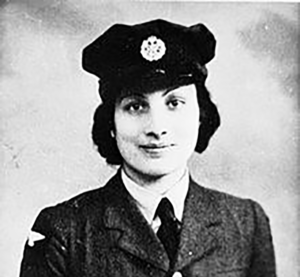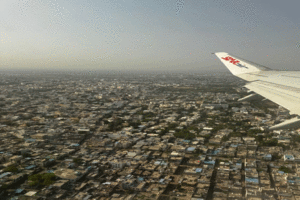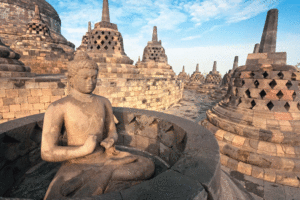Mr. Kishore Sherchand, Ph.D.
My humble perception is that there exist limited publications or discourses in the current media about the Western Buddhism explained by Nepalese scholars. I am prompted to write something from what I have observed and learned in the United States of America hoping to offer some insights why Buddhism is so fascinating to the Western World. Lord Buddha never taught any dogmatism, rather taught the core values of one’s life as: the Four Noble Truths and the Eightfold Paths. lord Buddha taught that any human being can attain Buddhahood provided he or she follows those relevant paths. That is why we also believe that Lord Buddha, apart from the contemporary Shakyamuni Buddha, existed before (Dipamkar) www.himalayanart.org/image.cfm/65824.html) and the Buddha will again come in the foreseeable future (Maitriya) (www.age-of-the-sage.org/buddhism/maitreya_buddha.html).
My Journey
When I came to the U.S.A., my deep desire was to find a place where I and my family could go and sit for peace and mindfulness. My first visit to such a place in the U.S.A. was Tse Chen Ling Buddhist Center near San Francisco downtown. It was run by a group of residential native born American monks and nuns. The center’s teaching was headed by a Tibetan Lama Gheshe Knawang Dakpa. The center is affiliated with the Foundation for the Preservation on Mahayana Tradition (FPMT) and their students often visit Nepal. After about a year and half, I started visiting Shambhala Buddhist Center in Sunset district. We did not see any monks or nuns as we did in Tse Chen Ling Buddhist Center. It was more like teachers adopting the Shambhala way of teaching, meditating and studying philosophy. Later, when I moved to Sacramento I was associated with a Thai Buddhist Temple Wat Sacramento Buddhavanaram run by 5 Thai monks. Again in about a year, I also started visiting another Buddhist Center by the name Lion’s Roar Buddhist Center in Sacramento run by a native born Lama Yeshe Jinpa. I also came to know another Buddhist Center by the name “One Bodhi Tree.” My first visit was to see a documentary “Dalai Lama Renaissance.” The Center’s teaching is run by Mr. Ravi Verma, a computer scientist, a Buddhist practitioner and a teacher. In one of the meetings, he taught about “Tongle” (taking and giving) meditation and led meditation in the memory of recent tragedy in Japan.
Buddhism in the U.S.A.
According to several studies, Buddhism was almost unknown to the U.S.A. 150 years ago. One major event that helped Buddhism gain a breakthrough in the United States was the Parliament of World Religions in Chicago held in 1893, a highly publicized interfaith event attended by great Buddhist personalities of the world. Large scale Chinese immigrants in the 1850s and Japanese in the late 1880s, Koreans in around 1903 and Tibetans after 1970s began to arrive. Since then, it is estimated that well over a thousand Buddhist temples and practice centers have been established in the U.S.A. The first Buddhist temple in America was built in 1853 in San Francisco by Sze Yap Company, a Chinese American fraternal society. California’s Hsi Lai Temple is one of the largest Buddhist temples covering 15 acres (61,000 m²). The City of Ten Thousand Buddhas is geographically the largest Buddhist community in the U.S.A. located in Talmage, California covering over 480 acres (1.9 km2) of land. The first Theravad monastic community in the United States was established in Washington Buddhist Vihar in Washington in 1965 by the monks from Ceylon.
The Eight Century Indian Sage and founder of Tibetan Buddhism, Guru Padma Sambhav (The Lotus born; Guru Rinpoche; Lopon Rinpoche) did this prophecy and what came out to be now,
“when the iron bird flies, horses run on wheels,
the Tibetan people will scatter like ants across the world,
and the Dharma will come to the land of red-faced people.”
According to Ryuei Michael McCormick (2002), there are apparently three groups of Buddhism flourishing in the United States. The first group are the “Ethnic Buddhists”; the second group are the “Evangelical Buddhists”; and the third are the “Elite Buddhists” comprised of those native born Americans. The Elite Buddhists comprise the most visible group of Buddhists in the U.S.A. Probably the best-known Tibetan Buddhist Lama to spread Buddhism in a more secular way in the United States was Chögyam Trungpa, who developed a series of secular techniques he called Shambhala Training. He established Shambhala International and Buddhist-inspired Naropa University in North America, first of its kind, that integrates ancient traditions of wisdom into the curriculum of modern education.
Robert A. F. Thurman (1990) once estimated there were 5 to 6 million Buddhists in America. And according to a 2004 study, more than 25 million Americans believe that Buddhist teachings have had an important influence on their spirituality. In a 2007 Pew Research Center survey, at 0.7% Buddhism was the fourth largest religion in the US after Christianity (78.4%), no religion (10.3%) and Judaism (1.7%).
Monastery to Living Room
Buddhism in the native land is performing rituals during birth, marriage, death, for peace and harmony. We have monastic way of practicing Buddhism. We do not meditate as a regular practice except monks and a few devoted Buddhists. Buddhism, especially Lamaism, has remained more of a passive type. Our lamas and nuns were not trained in a way that could hold public teachings or social activities.
According to Perry Garfinkel in National Geography 2005, “Around the globe today there is a new Buddhism. Its philosophies are being applied to mental and physical health therapies and to political and environmental reforms. Athletes use it to sharpen their games. It helps corporate executives handle stress better. Police arm themselves with it to defuse volatile situations. Chronic pain sufferers apply it as a coping salve. Prisoners practice for self-reflection and rehabilitation.” Buddhism is no longer just for monks and Asians in the United States; Christians and Jews practice it too. African Americans meditate alongside the Japanese Americans. Meditation has helped them to discipline their body and mind, finding a way out of dogmatism who don’t believe in it, finding a disciplined life action, peace of mind, closer to nature and scientific verification.
University professors, writers, thinkers, Hollywood celebrities, sports men and women, executives have embraced Buddhism in a way of understanding and practicing. Meditation and chanting have become a way for many of them. One of the first who followed and got ordained as the monk of Buddhism was Robert Thurman. The other most well known is Richard Gere who also supports freedom for Tibet and human rights.
The Fourth Form of Buddhism
Buddhism in the lands of Buddha is basically divided into three categories or sects: Thervad (Way of the Elders), a form of Buddhism practiced in Ceylon, India and other partd of South-East Asia; Mahayan (Great Vehicle) popular in East Asia, China, Korea, Japan and part of Vietnam and Vajrayan, a refined form of Mahayan popular in Tibet, Himalayan region of Nepal and India, Bhutan, Mongolia, part of Eastern Russia. The fourth one coming up as the Western Form of practice popularly coined by Vietnamese Zen Buddhist Thich Nhat Hanh as “Engaged Buddhism” – socially engaged, livingroom-based, more secular, non-monastic, Humanistic, Navayan or Dhyanayan. The other best known who followed the path of Buddhism in a socially and politically way was Dr. Bhimrao Ramji Ambedkar. Dr. Ambedkar, the Founding Father of the modern Indian constitution, is widely considered as the main figure who gave the coming back of Buddhism in India that was kept exiled for over 800 years.
Buddhism Is Rising
Many American youths question whether Buddhism is a religion or a philosophy. Because, Siddhartha Gautam did not say himself as a Son of God (Jesus Christ), a Prophet of God (Muhammad) or a God of God (Parameshwor Vishnu), Buddhism does not preach the existence of God. The western quest to understanding the true meaning of Buddhism in daily life may have imparted an added value which is more than just a ritual practice as in the East. Buddhism has been least inimical against other religions.
The greatest man of the Century Albert Einstein appreciated Buddhism in his quote as the “Religion of the Future.” His prophecy is coming true judged by growing acceptation by Western intellectuals taking up meditation. Lama Surya Das, one of the most highly trained native born American Lamas in the Tibetan tradition presents his definitive views in his book, “Awakening the Buddha Within” – “We are all Buddhists.” The problem is that most of us are sleeping Buddhas. Buddhism is a less theology or a religion than a promise that contains meditational practices and mind trainings which can effectively show us how to awaken Buddha nature and liberate us from suffering and confusion. U.C. Berkeley Prof. Lewis Lancaster, a practicing Buddhist and a distinguished scholar of Buddhism says: “Buddhism gave portable sanctity to the world; other Buddhism gave relics to the Western society; Buddhism connected its land of origin to China and parts of the ancient world; taught monastic living to other religions. (ksherchand@yahoo.com)




